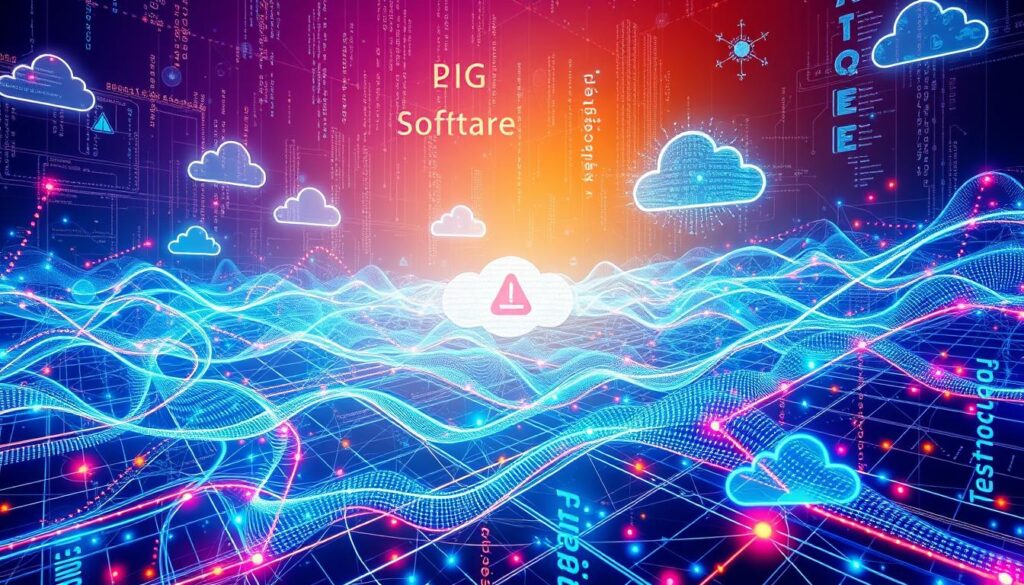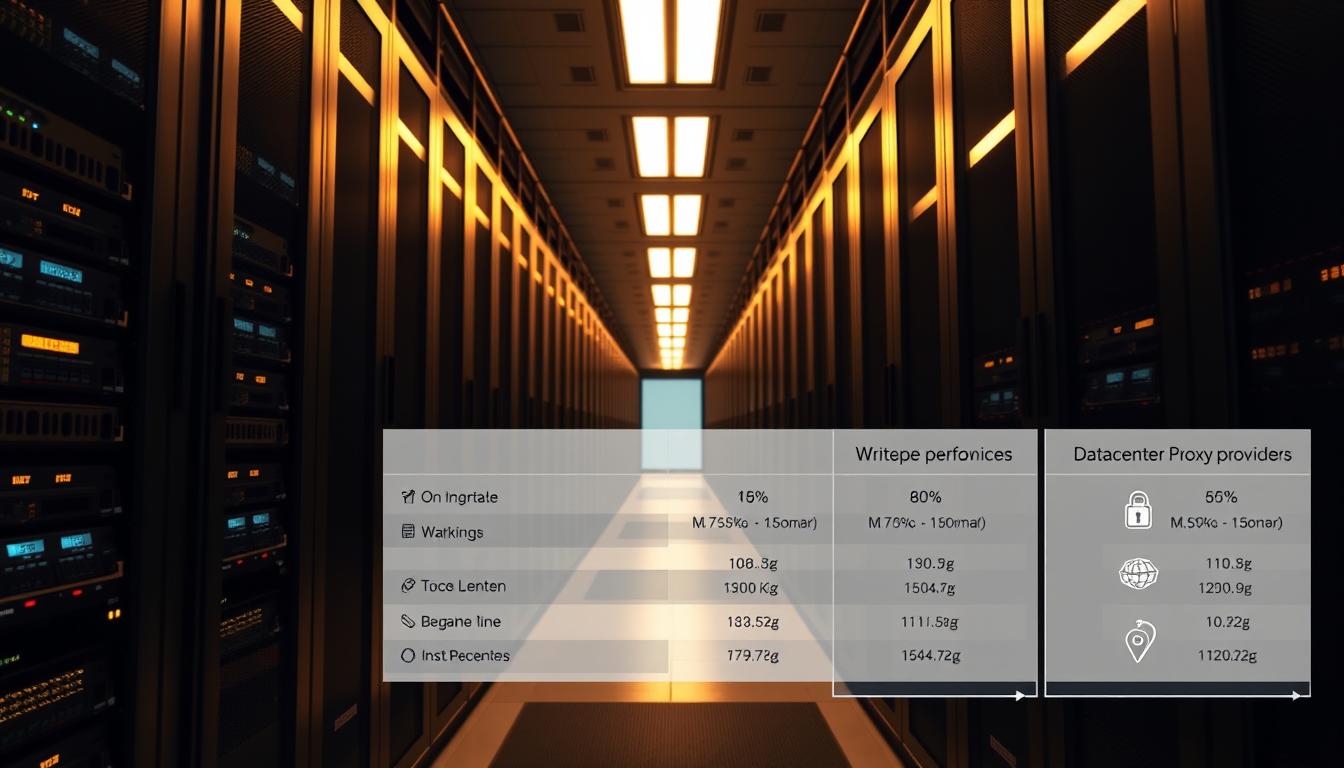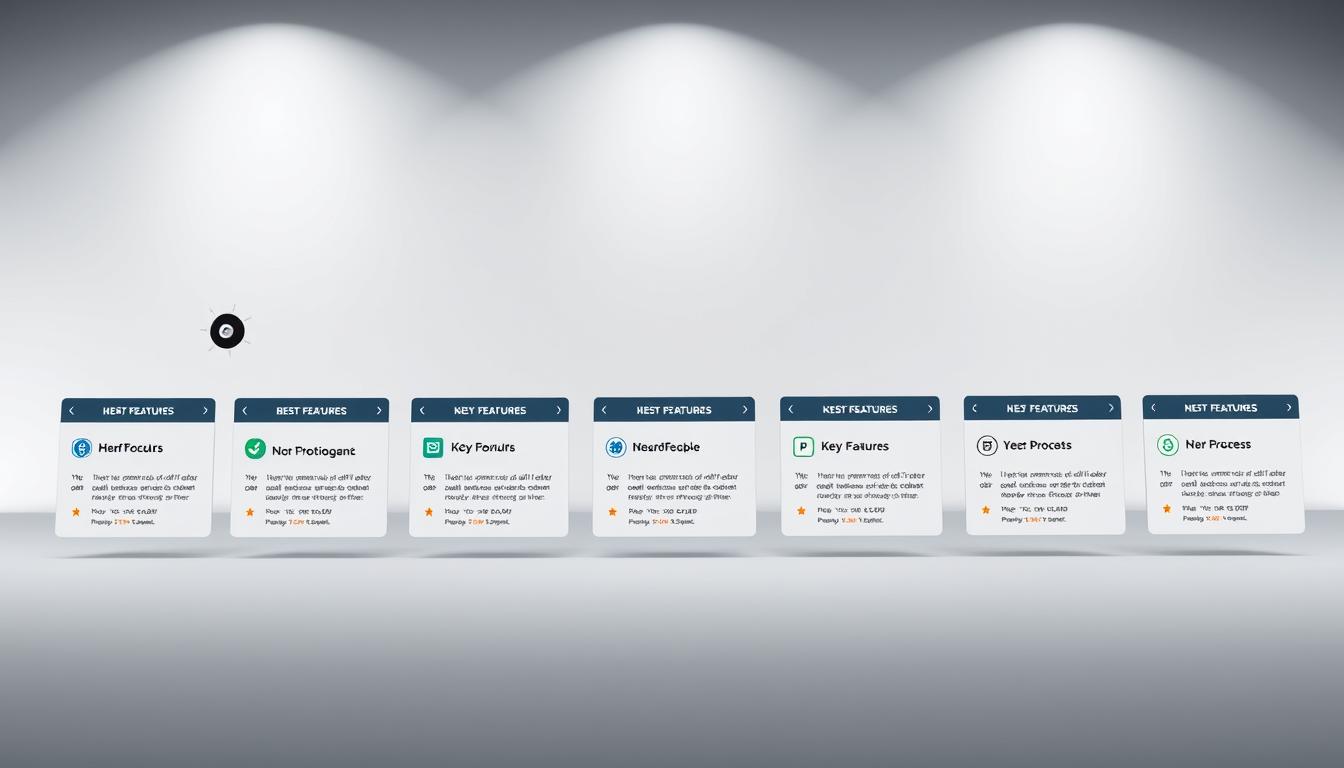FTC disclaimer: This post contains affiliate links and I will be compensated if you make a purchase after clicking on my link.
Do you struggle to understand the huge amount of data your company makes? Do you feel like you’re missing out on important insights? If yes, you’re not alone. Many businesses face the same challenge of using big data to stay ahead.
But there’s good news. There are many big data software solutions out there. They range from advanced analytics to top-notch data visualization tools. These options can change how you make decisions.
Key Takeaways
- Companies using data-driven approaches report above-market growth and a 15-20% increase in profits.
- Big data software can streamline analytics pipelines, reduce report generation time, and empower self-service analytics.
- Leading big data tools include Apache Hadoop, Apache Spark, Qlik Sense, and Tableau.
- Transitioning from data-aware to data-driven can help decision-makers find the information they need when they need it.
- Evaluating factors like scalability, ease of use, and data governance is crucial when selecting the right big data software.
What is Big Data Software?
Big data software helps manage large amounts of data. It includes tools for collecting, storing, processing, and analyzing data. This is key for businesses to make smart choices and innovate with the growing data.
Data Collection, Storage, and Processing
The main parts of big data platforms are:
- Data collection: Getting lots of data from different places like websites and apps.
- Data storage: Keeping the data safe and organized in a big storage area.
- Data processing: Making the data easy to understand for analysis.
Big data software uses Hadoop, Spark, and NoSQL databases. These help manage big data efficiently, making sure it’s stored and analyzed well.
| Big Data Software | Key Features | Performance Statistics |
|---|---|---|
| Zoho Analytics | 100+ readymade connectors for popular business apps, cloud drives, and databases | Offers seamless integration and data visualization |
| Apache Hadoop | Faster data processing and scalability from single servers to thousands of machines | Handles large data sets with distributed processing and storage |
| HPCC Systems | Graphical IDE for simplified development, testing, and debugging | Provides a unified platform for data processing and analytics |
| Apache Storm | Benchmarked for processing one million 100-byte messages per second per node | Ideal for real-time processing of big data streams |
| Apache Cassandra | Supports replicating data across multiple data centers for lower latency and fault-tolerance | Delivers high availability and scalability for big data applications |

These big data software solutions help manage data well. They make it easy to go from collecting and storing to analyzing and using the data. This helps businesses make better choices and grow.
Benefits of Big Data Analytics
In today’s fast world, data is key for businesses to stay ahead. Big data analytics helps companies use lots of data to make smart moves. It boosts growth and makes profits better. It helps in many ways, like making operations better and improving how we serve customers.
Big data analytics is great for making smart choices. It looks at past data to spot trends. This helps businesses make plans that really work. It leads to growth as companies can see what’s coming and what customers want.
A study by McKinsey found big data users grow faster and make more money. They see a 15-20% profit boost. It helps everyone in a company to understand data better. This leads to solving problems and coming up with new ideas.

Big data also helps save money. It finds ways to cut costs and make more money. For example, in shipping, it cuts down on returns by planning better routes and managing stock better.
It also helps make products and services that customers really want. By knowing what customers like, businesses can make things that meet their needs. This makes customers happier and more loyal.
In today’s world, using big data is a big advantage. Companies that make smart choices with big data do well. They save money and make customers happy. The benefits of big data are clear.
Key Features to Look for in Big Data Software
Choosing the right big data software is crucial. It must handle large data volumes, offer interactive data visualization, and use AI-powered analytics and machine learning. These features are vital for a big data platform that grows with your needs.
Handling Large Data Volumes
Big data tools must handle big data. You need a scalable big data analytics solution that processes data in real-time. It should also connect with multiple databases and cloud data platforms for easy data gathering.
Interactive Data Visualization
Turning complex data into easy-to-understand visuals is key. The top big data software offers various visualization options. This includes dynamic charts, graphs, and interactive dashboards for everyone to use.
AI and Machine Learning Capabilities
Big data tools should do more than just run queries and show visuals. AI-powered big data solutions bring advanced features like natural language search and machine learning. These help find hidden patterns and insights in data.

Best Big Data Software
In today’s world, companies have many big data software choices. From open-source tools to commercial platforms, there’s a lot to pick from. We’ll look at 10 top big data software options for your business.
1. Apache Hadoop
Apache Hadoop is a popular open-source tool for big data. It’s great for handling lots of data. It has tools like HDFS, MapReduce, and YARN, making it a full big data solution.
2. Apache Spark
Apache Spark is fast and versatile for big data. It’s good for real-time data and has tools for machine learning and SQL. Its memory use makes it perfect for quick data work.
3. Tableau
Tableau is a top data tool for making dashboards and reports. It’s easy to use and connects to many data sources. It helps users find important insights in big data.
4. RapidMiner
RapidMiner is a strong top big data software for data work. It has tools for getting data ready, learning from it, and predicting. It’s used by over 1 million people and 40,000 companies.
5. DataRobot
DataRobot is a leading big data platforms for making and using predictive models. It uses many machine learning algorithms. It makes advanced data work easy for everyone.
| Big Data Software | Key Features | Pricing |
|---|---|---|
| Apache Hadoop | Distributed data processing, scalable storage, fault-tolerance | Open-source, with commercial distributions available |
| Apache Spark | In-memory computing, real-time data processing, machine learning | Open-source, with commercial support options |
| Tableau | Interactive data visualization, self-service analytics, wide data connectivity | Subscription-based pricing, with options for individuals and enterprises |
| RapidMiner | Data preparation, predictive modeling, model deployment | Subscription-based pricing, with options for individuals, teams, and enterprises |
| DataRobot | Automated machine learning, model management, real-time predictions | Custom pricing based on organization’s needs |
These are just a few of the many top big data software and best big data analytics tools out there. When choosing, look at features, cost, and how well they scale. Find the best fit for your business needs.

ThoughtSpot: AI-Powered Analytics
ThoughtSpot is changing the game in data analytics. It uses AI to help users make smart, data-driven decisions. This platform lets everyone use their data to make better choices.
Natural Language Search and Recommendations
ThoughtSpot is great because it understands what you say. You can ask it questions in simple English. Then, it gives you quick, right answers.
This makes it easy for anyone to find data insights. They can make decisions without needing to know a lot about tech.
ThoughtSpot also has a feature called Sage. It uses big language models and special search tech. This gives users trustworthy AI insights fast.
Wellthy saved over $200,000 by using ThoughtSpot. It made their business users more efficient. They could find answers easily through natural-language search or Liveboards.
“ThoughtSpot is the only tool for business users to get quick answers to their data questions. The natural language search and AI-powered recommendations have been game-changing for our organization.”
ThoughtSpot is leading the way in data analytics. It’s ready for the future with advanced AI. It makes going from data to data-driven decisions easy and safe.
Apache Hadoop: Open-Source Framework
Apache Hadoop is a key open-source big data framework. It changes how companies deal with lots of data. It can handle structured, unstructured, and semi-structured data.
Hadoop makes it easy to manage and analyze data. It can grow from one computer to thousands. Each computer helps with local tasks and storage.
The Hadoop system has four main parts. There’s HDFS for storing data, YARN for managing resources, MapReduce for batch jobs, and Common for shared tools. Together, they make a strong platform for big data.
Hadoop’s design lets it handle big data well. It can store and process data from gigabytes to petabytes. This means it can work on huge amounts of data fast.
The Hadoop world has grown a lot. It now has many tools for big data. Companies like Google and Yahoo use it to manage their data.
Hadoop is loved for its scalability, low cost, and flexibility. It’s also good at handling failures. This makes it a top choice for big data needs. Apache Hadoop helps businesses find new insights and innovate.
“Apache Hadoop is a framework for running applications on large clusters of commodity hardware. The library is designed to detect and handle failures at the application layer, so delivering a highly-available service on top of a cluster of computers, each of which may be prone to failures.”
Apache Spark: Real-Time Stream Processing
In the world of big data analytics, Apache Spark is a top choice. It’s an open-source data processing framework that shines in real-time stream processing. It’s used in many fields, like telecom, finance, and healthcare, for handling big data.
Apache Spark is known for its fast data processing. It uses in-memory computing to work quickly. This makes it up to 100 times faster than old methods. Its Spark Streaming part is especially good for fast data needs, like fraud detection and customer prediction.
Apache Spark also has a wide range of tools and algorithms. It supports SQL, machine learning, and graph analytics. This makes it great for many big data tasks, from analysis to predictive modeling.
| Feature | Benefit |
|---|---|
| Real-time Stream Processing | Enables near real-time data processing for applications like fraud detection and customer churn prediction |
| In-Memory Computing | Delivers exceptional processing speeds, up to 100 times faster than traditional MapReduce |
| Comprehensive Library of Tools | Supports SQL queries, machine learning, and graph analytics, making it a versatile solution for big data analytics |
Using Apache Spark for real-time stream processing can change the game for businesses. It processes data fast and offers many analytical tools. This makes it a top pick for companies wanting to lead in big data analytics.
Evaluation Criteria for Big Data Software
When looking at big data software, it’s key to see how it handles lots of data. Scalability and performance matter as your data grows. The software should also be easy to use and offer self-service analytics.
This lets everyone, not just experts, find insights easily. This way, the whole team can make quick, smart decisions.
Scalability and Performance
Recently, more businesses need big data analytics. They face big challenges in sorting through lots of data. Big data software helps tackle these big data tasks.
It should quickly process lots of data. This means fast access to lots of information.
Ease of Use and Self-Service Analytics
In today’s fast world, user-friendliness is crucial. Features like dashboards and drag-and-drop tools help everyone use data. This builds a culture that values data.
The software should also meet different users’ needs. It should offer tools like clustering and decision trees.
“The big data software market is becoming more competitive with various vendors providing a wide range of big data analytics solutions.”
By looking at these criteria, businesses can find software that helps everyone. This leads to better decisions and success for the whole team.
Cloud-Based Big Data Solutions
The world of big data is changing fast. More companies are using cloud-based solutions to use data analytics. These solutions offer scalable infrastructure and flexible pricing, making them great for all sizes of businesses.
These cloud solutions work well with popular cloud services. They make it easier to handle and analyze data in the cloud. Top cloud big data solutions include Amazon Web Services’ suite of data and analytics services, Microsoft’s Azure Synapse Analytics, and Google Cloud’s BigQuery.
Using cloud-based big data solutions has many benefits. A McKinsey report says they can increase EBITDA by 7-15%. They also cut IT costs by 10-20%. A Forbes Insights study found companies using big data analytics grow their revenue by 10% or more.
As the need for data insights grows, cloud-based managed big data services and cloud data platforms become more important. By using these solutions, companies can make the most of their data and stay competitive.
| Cloud-Based Big Data Solution | Key Features | Supported Industries |
|---|---|---|
| Amazon Web Services (AWS) |
|
|
| Microsoft Azure Synapse Analytics |
|
|
| Google Cloud BigQuery |
|
|
In the post-pandemic world, using cloud-based big data solutions can give companies an edge. By using managed big data services and cloud data platforms, businesses can make the most of their data. This helps them make better decisions and succeed in the long run.
“Companies using big data analytics for decision-making are more likely to achieve revenue growth of 10% or more than their counterparts.” – Forbes Insights
Data Governance and Security Considerations
As we explore big data, we see how vital data governance and security are. Good big data software must protect and manage sensitive info well.
Access control is a big part of data governance. Big data platforms need to control who sees what data. They should also log all activity. Knowing where data comes from and how it changes is also key.
Following data privacy laws is a must. Big data software should help meet GDPR, HIPAA, and PCI-DSS rules. It should handle consent, DSARs, and data types.
Businesses need to balance big data analytics benefits with keeping data safe. Focusing on data governance and security helps use big data wisely. This way, they avoid data misuse or breaches.
| Key Data Governance Features | Benefits |
|---|---|
| Access Controls and Audit Logging | Ensure proper data access and usage monitoring |
| Data Lineage Tracking | Understand the origin and transformation of data |
| Compliance Management | Adhere to industry regulations and data privacy laws |
| Consent Management and DSAR Handling | Respect individual data rights and preferences |
With strong data governance and security, big data software helps organizations. It lets them use their data fully while keeping everyone’s trust.
Integration with Existing Systems
When you add big data software to your data system, it’s important to fit well with what you already have. It should work with many data sources like databases and cloud storage. This gives you a full view of your data.
Good integration means data flows smoothly and automatically. It also lets you add analytics to your main business work. This helps in making better decisions.
One big plus of big data software integration is breaking down data silos. This lets you see your business as a whole. You can make better choices and plans with all your data together.
The right tools make managing data easier and better. They help get insights to those who need them fast.
- Look for a platform that connects to many data sources. This lets you use data from all over your company.
- Choose tools that automate data work. This saves time and effort.
- Make sure the tools work well with your business apps. This lets you use data insights in your daily work.
- Your solution should grow with your data. It should stay fast and reliable even when data gets bigger.
| Data Integration Feature | Benefit |
|---|---|
| Connectivity to diverse data sources | Enables a comprehensive view of your data across the enterprise |
| Automated data pipelines | Streamlines data management and reduces manual effort |
| Embedded analytics | Empowers data-driven decision-making within your core business workflows |
| Scalability and performance | Ensures the data integration solution can keep up with growing data volumes and sources |
Choosing a strong big data software integration solution can really help your business. It leads to better results, more efficiency, and a competitive edge.
“Effective data integration is the foundation for deriving meaningful insights from your data and making informed, data-driven decisions.”
Conclusion
Finding the right big data software can seem hard. But knowing what to look for makes it easier. Look at your data needs, business goals, and IT setup. This helps you pick the best software for your team.
Choosing the right software is key to success. It can change how you use data. Tools like Apache Hadoop and Google BigQuery help manage big data. They make it easier to use data for better decisions.
When picking a big data platform, think about scalability and ease of use. Cloud services like Amazon Redshift are flexible and cost-effective. Remember, keeping your data safe and private is very important.








